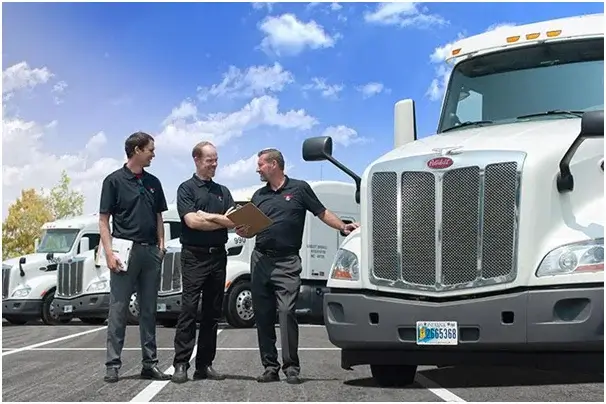Trucking is the most important element in the supply chain, which has made it a hot topic of discussion in the media during the pandemic. This increased attention shows that the trucking profession is viewed with great respect and appreciation at this time, as it is an indispensable part of the economy and a good career start for people just starting out in the workforce.

But the COVID-19 pandemic is greatly affecting the trucking industry, and as a result, truckers feel a lot of stress. They are now in their workplace to take the industry to the next level, but are employers willing to change and listen?
Centerline Drivers conducted a survey of truckers and transportation business owners to get a more detailed picture of the current state of the transportation industry. Let’s take a look at the main findings of this survey.
Wage boom or wage bust?
The steadily growing e-commerce sector, inflation, and competition have triggered a major increase in truckers’ wages. However, more than half of them still feel that their wages are not competitive. In some parts of the U.S., wage increases are nearly offset by inflation. But in 2022, 68% of employers are already willing to raise wages, almost a quarter more than last year. But the increase is likely to be small, only $1 or $2 an hour.
One way or another, salary is the main factor that attracts employees and is the best motivator for high performance. By increasing salaries, companies get a chance to hire the best workers and keep them happy and focused on productive tasks.
Suggestion: 9 Best Fuel Stabilizer For Small Engines Review To Buy Online
When viewed from a long-term perspective, wage increases are an investment in a steady increase in profits. After all, more productive and motivated truckers will perform better and cause fewer problems.
Driver Welfare
The trucking industry is increasingly focused on the well-being and health of drivers, as many regularly report driving-related ailments. 49% of truckers complain of gaining excess weight due to sedentary work. Weight gain is due to improper nutrition, as 35% of drivers resort to fast food because of the need to eat while on the road. Truck drivers often complain of back, shoulder, and knee problems due to long and tedious sitting in cramped seats.
That said, we can conclude from the survey data that most drivers prioritize their physical and mental health. 66% of them try to eat healthy on the road and 62% actively exercise. And only 12% of truckers say they do nothing to take care of their health.
Safety is every driver’s absolute priority 71% of truckers consider distracted driving to be a major safety problem. Two-thirds of truckers believe fatigue is a serious problem for drivers. Serious fatigue is not surprising, as many drivers only get 5-7 hours of sleep a night, far less than the recommended amount of sleep. This further underscores the severity of the pandemic’s effects on drivers’ physical and mental health. Like workers in many other industries, truckers have been hit hard by the pandemic.
Thirty-eight percent felt the negative effects of COVID-19. In addition to directly contracting the virus while on the job, the pandemic also had consequences such as having to take leave to care for loved ones or even losing family members to illness. With this in mind, family and home are the main concerns for drivers: 38% identified them as their top concerns.

It’s time to get creative with hiring
One of the most pressing problems in the trucking industry is still the difficulty of hiring new drivers. Seventy-two percent of employers say they have difficulty finding drivers, down from 57 percent just a year ago. A quarter of employers say they are getting more creative in their hiring than before. But even with this approach, they are forced to offer applicants high salaries and bonuses, as other companies in the industry do.
One way to attract new hires is to explore a diverse workforce. 92% of employers and even 83% of drivers say the trucking industry is diverse, but employers say they average less than 10% of female employees. Given the effects of burnout and mental and physical health, there may be an opportunity to set any transportation company apart, not only by recruiting from a diverse pool but also by rewarding them with better benefits and supporting work-life balance.
Are we ready for a fast-coming future?
The government is considering in the future the possibility of lowering the age limit for drivers to 18 years old. This will attract high school graduates to the profession. Such a decision seems to be one of several possible ones for the industry, as it seriously opens up the talent pool. But in spite of this, 46% of drivers consider such a change negative.
Suggestion: 9 Best Tuner For 7.3 Powerstroke Review To Buy Online
As a result, you can predict the success of those companies that sometimes disagree with conventional wisdom. Attracting young drivers is just one possible idea, but there can be a huge number of them. For example, according to a survey, 21% of truck drivers own motorcycles. So why not try looking for new recruits among bikers?
Conclusion
The future of trucking depends on the future of truckers. Employers who take better care of their employees will ultimately win the market. Driver wage expectations are getting higher with inflation and growing needs, and competitive pay is the best way to attract and retain worthy employees. Managers understand that caring for the driver means caring for the whole person, on and off the road. The mental and physical health of drivers should be a priority.
Recruitment of new personnel is slow because many employers are sticking to the old and not quite right methods. The industry needs radical changes in the shortest possible time. As in other fields like technology and nursing, diversity is a big step forward. The industry must and can expand its appeal to a broader audience, including women, young people, and the new cultural and racial groups that have already infiltrated the industry.
Employers and drivers should accept change, and quickly. As technology becomes more widespread both inside and outside the truck, the industry must adjust itself while ensuring that drivers remain motivated, healthy, and competitive.






